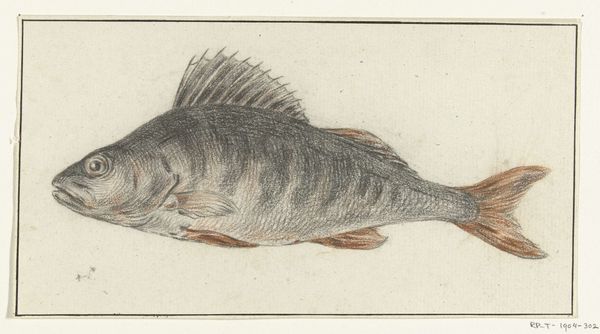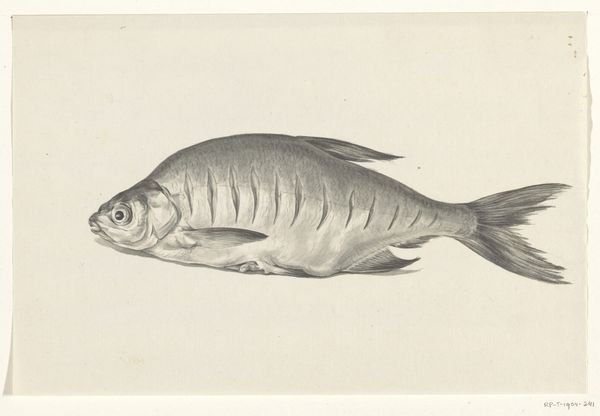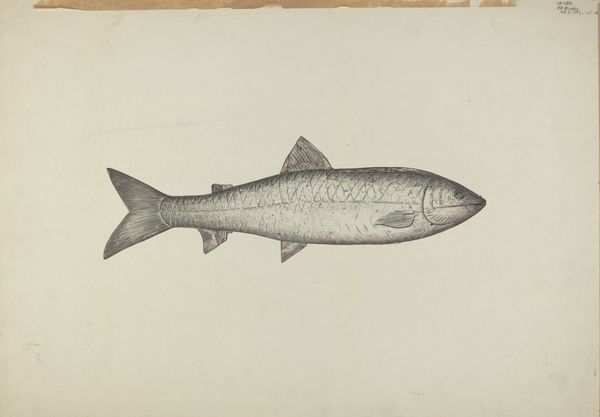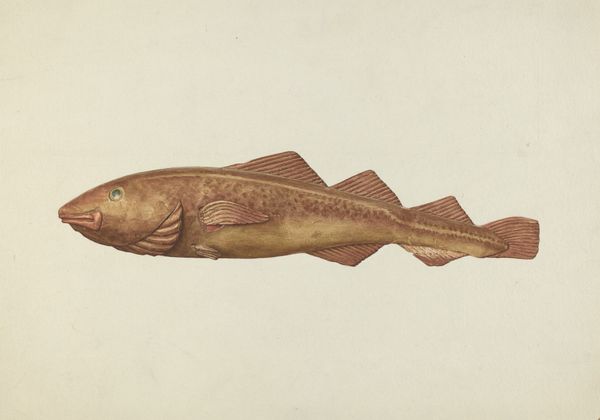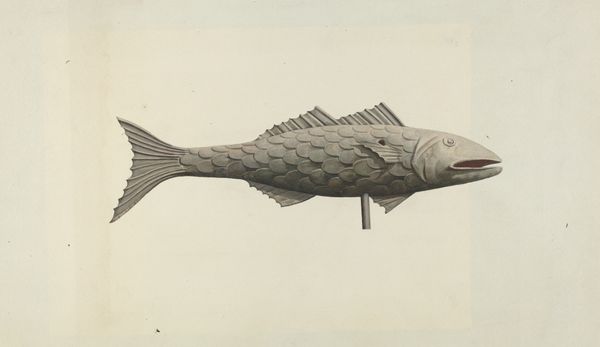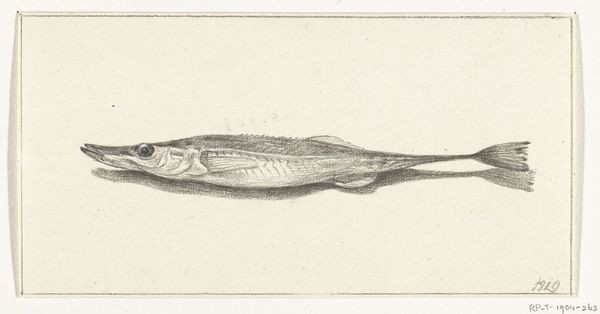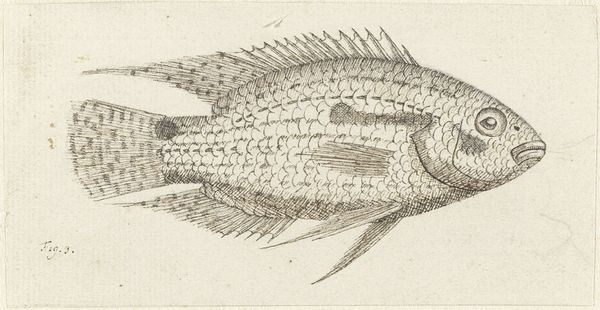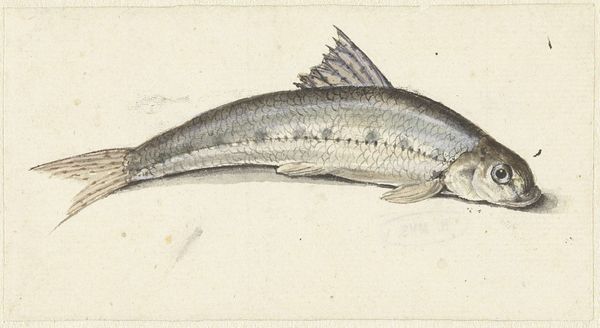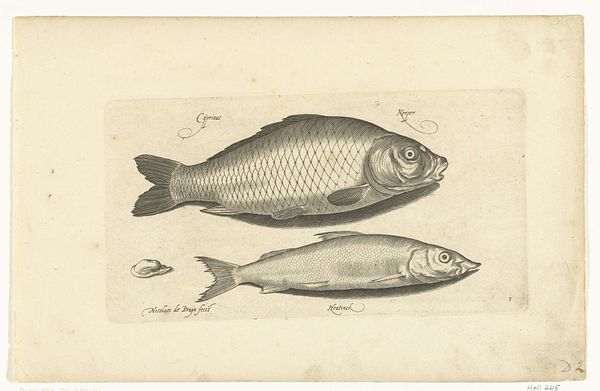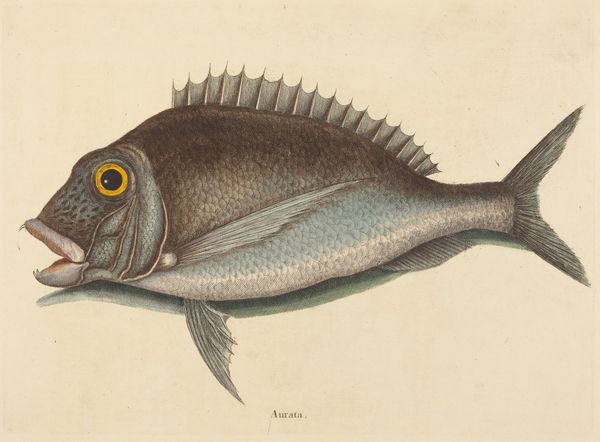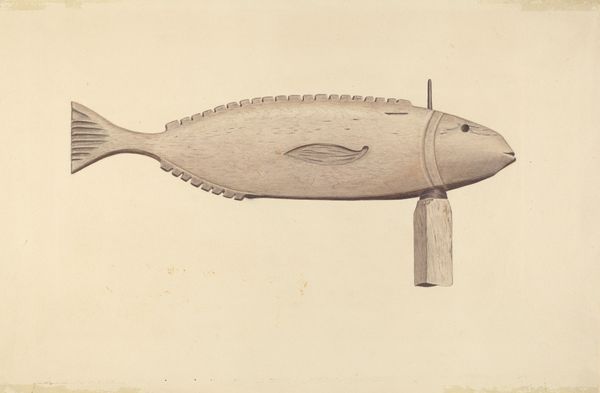
drawing, ink, pen
#
drawing
#
pencil sketch
#
ink
#
geometric
#
pen-ink sketch
#
pen
#
realism
Dimensions: height 78 mm, width 178 mm
Copyright: Rijks Museum: Open Domain
Curator: This is "Fint," a drawing by Johannes le Francq van Berkhey from 1749, here at the Rijksmuseum. It's executed in pen and ink, with some pencil sketching. What's your take on it? Editor: It feels immediate, almost like a scientific record, yet there’s a real tenderness in the depiction. The artist has really focused on rendering the scales—each carefully delineated line contributes to the overall texture and the slightly dull, lifeless gleam of the fish. Curator: Well, that reflects a growing interest during that period, where accurate portrayals of the natural world started becoming really valued, in both artistic and scientific circles. Berkhey was quite engaged in both, wasn't he? Consider also the consumption and trade of this fint fish at the time. Was it accessible to all or only a delicacy for some? Editor: That makes sense when considering the piece's precision and almost diagrammatic qualities. Looking at it purely from a formal perspective, the lines create these beautiful, repeating geometric patterns on the fish’s body, disrupted only by a few darker markings that almost feel like deliberate flaws. Curator: And those marks could indeed reference flaws, perhaps literally in the specimen, or subtly point toward the labor that got it to the viewer. Was it bruised in transport? Damaged while caught? What tools or means were employed in its capture and subsequent handling? It really shifts your understanding to consider how and by whom this fish might have been handled. Editor: It is also very interesting how Berkhey used hatching and shading to suggest the subtle contours of the fish's body. The restricted palette creates a cohesive aesthetic and helps emphasise texture and form. Curator: It shows a kind of visual restraint, which when combined with the realistic portrayal and stark setting, is highly compelling to the viewer. In the absence of anything else it really forces one to acknowledge the means and realities that placed the dead fish before us. Editor: I agree; this piece is deceptively complex and makes one reflect. Curator: Definitely, whether it’s an investigation into nature or into artmaking itself. A confluence of science, economy, and design.
Comments
No comments
Be the first to comment and join the conversation on the ultimate creative platform.

